The Edinburgh Festival reserved its biggest operatic event for last. From St Petersburg, the Mariinsky Opera brought a production of Berlioz’s Les Troyens that could truly be described as epic: a stellar cast, a vast trompe d’oeil set, and an overall duration comfortably over five hours. A large audience greeted it enthusiastically, but not ecstatically. Maybe exhaustion had set in: there were yawns and smiles in equal measure on the way out.
Les Troyens is really two operas. In the first two acts Troy falls to the Greeks after the naïve defenders ignore the prophecies of doom from Cassandra and drag the Trojan horse into the city. After the long supper interval the action moves to Carthage: in an opera that has been more often cut than not, the three acts of Les Troyens à Carthage can be performed on their own – Berlioz composed a prelude specially. They tell of the arrival of Aeneas, his love for Dido, and his compulsion to abandon her to fulfil his divine destiny, which is to create a new country called Italy.
From the outset, this production is on a grand scale. The first two acts and the last have a set, designed by stage director Yannis Kokkos, that is defined by a huge reflective surface that angles up steeply from the back of the stage. The effect is that the audience not only sees the singers from the front but also from above. The chorus effectively doubles in size and any antics on the stage floor become a simultaneous backdrop. It is not a glass mirror, or even a rigid surface (occasionally it rippled) but for the most part the reflection from the screen is so perfect it is quite difficult to see where reality stops and the reflection begins. The screen was also visually porous so that images of Troy burning could be projected behind it.
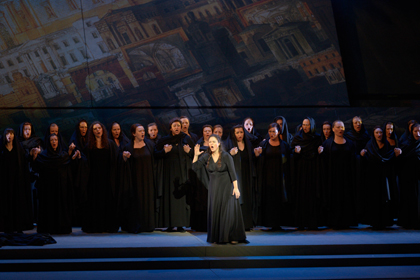 It is clever, but unsettling, and slightly distracts from the magnificent attempts of Cassandra - sung by Mlada Khudoley at short notice - to avert disaster (Cassandra with the women's chorus pictured right). Her voice alone could do it, but her acting is less convincing. For good movement on stage we have to look at the extended ballet episodes. Ladies in the audience (I was told on good authority) particularly liked the half-naked muscular young men who fight and pirouette. The great octet and chorus in scene two, however, shows just what a great and moving sound conductor Valery Gergiev can produce with his orchestra, soloists, and a large chorus.
It is clever, but unsettling, and slightly distracts from the magnificent attempts of Cassandra - sung by Mlada Khudoley at short notice - to avert disaster (Cassandra with the women's chorus pictured right). Her voice alone could do it, but her acting is less convincing. For good movement on stage we have to look at the extended ballet episodes. Ladies in the audience (I was told on good authority) particularly liked the half-naked muscular young men who fight and pirouette. The great octet and chorus in scene two, however, shows just what a great and moving sound conductor Valery Gergiev can produce with his orchestra, soloists, and a large chorus.
Les Troyens à Carthage has simpler, smaller, stage machinery. Carthage looks a bit like an architect’s model and the Trojan fleet is represented by cut-out white ships dangling from strings. But Act IV opens with a magnificent otherworldly representation of Dido’s gardens, which behind multiple gauze screens become a huge rustling northern pine forest in which odd shapes glow and horses fleetingly appear.
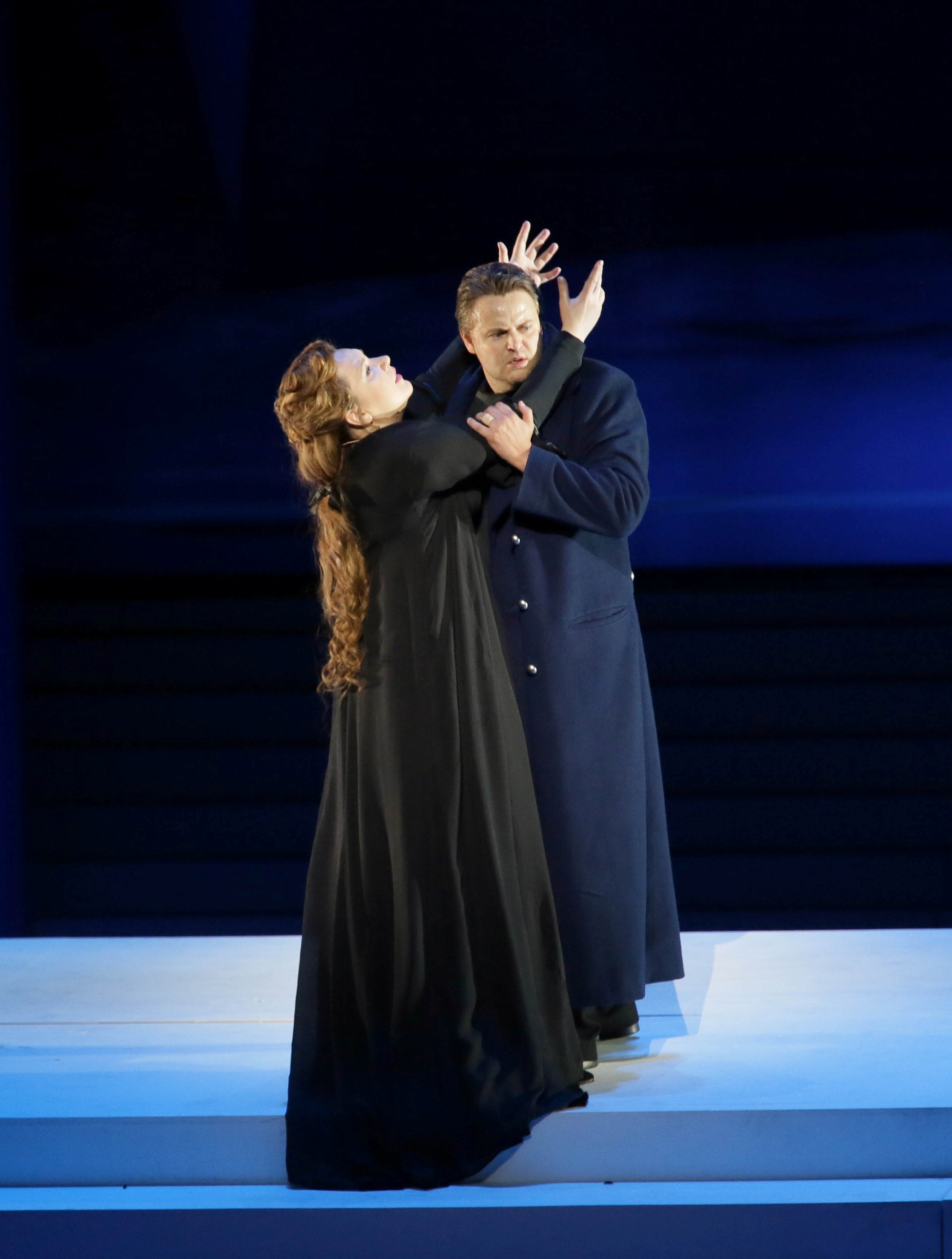 At about this point in the opera the emphasis switches, imperceptibly, from affairs of state to those of love. Aeneas and Dido are getting on so well that the minister Narbal warns of disaster in a great aria just perfect for the sock-trembling bass Yury Vorobiev. But the music soars heavenward and before long the lovers have the wonderful duet “night of endless ecstasy” where Ekaterina Semenchuk’s richly voiced Dido and finds a marginally more acidic counterpoint in Sergey Semishkur’s Aeneas (pictured with Semenchuk). But, even in a heavily stylised production, the acting is unconvincing – far too many hands waved in the air and clasped to the ear.
At about this point in the opera the emphasis switches, imperceptibly, from affairs of state to those of love. Aeneas and Dido are getting on so well that the minister Narbal warns of disaster in a great aria just perfect for the sock-trembling bass Yury Vorobiev. But the music soars heavenward and before long the lovers have the wonderful duet “night of endless ecstasy” where Ekaterina Semenchuk’s richly voiced Dido and finds a marginally more acidic counterpoint in Sergey Semishkur’s Aeneas (pictured with Semenchuk). But, even in a heavily stylised production, the acting is unconvincing – far too many hands waved in the air and clasped to the ear.
Les Troyens contains much beautiful music, here wonderfully performed, but the scope of Berlioz’s invention is not quite equal to the scale of his creation, and there are moments when one realises why full a full staging is still a relative rarity. Writing about the opera, the 19th Century critic Pierre Scudo said: “If he has failed, he has failed magnificently”.
- Further performances 29th and 30th August (different cast on 29th)

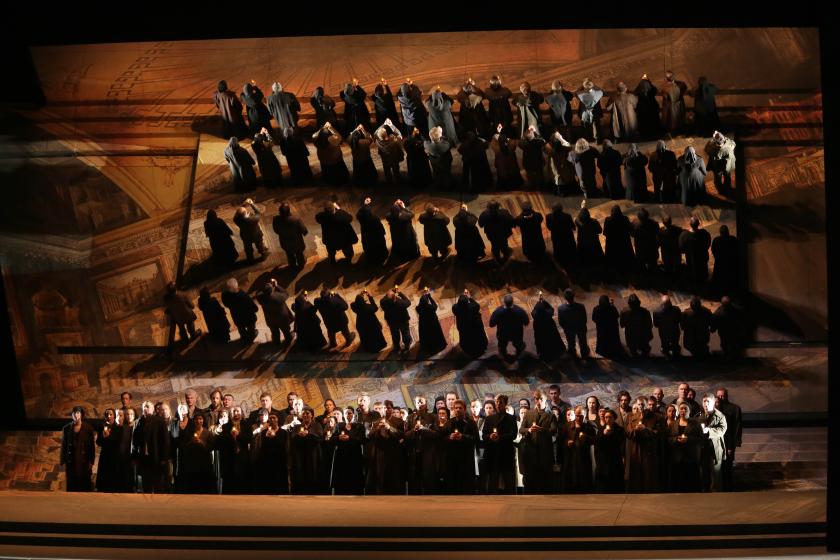

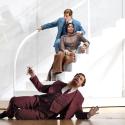






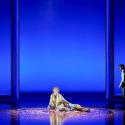

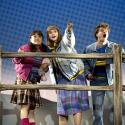
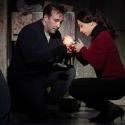
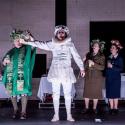
Add comment